Diseases can be classified into two types: Acute and Chronic Diseases. Acute diseases are those that come on suddenly and last for a short time, like the flu or a cold. These diseases often have clear symptoms and can be treated quickly. Chronic diseases, on the other hand, develop slowly and last for a long time, sometimes for life. Examples include diabetes, asthma, and heart disease. Chronic diseases usually require long-term management and care. While acute diseases can often be cured, chronic diseases need ongoing treatment to control symptoms and prevent complications.
What are Acute Diseases?
Acute diseases are illnesses that start suddenly and usually last for a short period, typically a few days to a few weeks. They cause noticeable symptoms that may need quick medical care but often resolve quickly with treatment. Examples include the common cold, flu, and food poisoning. Acute diseases are different from chronic diseases, which last longer and progress slowly.
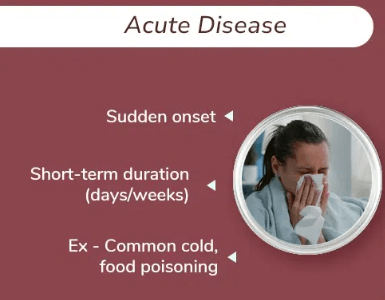
While some acute diseases can be severe or cause complications, most people recover fully after treatment or rest. In summary, acute diseases come on fast, show clear symptoms, and don’t usually last long, making them manageable in most cases with timely care.
Define Chronic Diseases
Chronic diseases are health problems that last for a long time, often for months or years, and usually cannot be cured completely. These diseases develop slowly and can get worse over time if not managed properly. People with chronic diseases often need regular medical care and lifestyle changes to control their condition.

Common examples of chronic diseases include diabetes, where the body cannot control sugar levels; high blood pressure, which puts strain on the heart; asthma, which makes it hard to breathe; and arthritis, which causes joint pain and stiffness. Healthy habits like eating well, exercising, and avoiding smoking can help prevent or manage chronic diseases and improve quality of life.
Difference Between Acute and Chronic Diseases
Acute diseases are illnesses that start suddenly and last for a short time, like a cold or a fever. Chronic diseases, on the other hand, are long-lasting and may last for years or even a lifetime, such as diabetes or heart disease. Acute diseases often go away with treatment, while chronic diseases need ongoing care.
| Difference Between Acute and Chronic Diseases | ||
| Aspects | Acute Diseases | Chronic Diseases |
| Definition | Sudden onset and short duration of illness. | Long-lasting, often persisting for months or years. |
| Duration | Typically lasts a few days to a few weeks. | Lasts for an extended period, often lifelong. |
| Onset | Rapid and sudden onset of symptoms. | Slow and gradual onset of symptoms. |
| Examples | Flu, common cold, strep throat, appendicitis. | Diabetes, hypertension, arthritis, asthma |
| Severity | It can be severe but is usually short-lived. | Can vary in severity, often mild but persistent |
| Treatment Focus | Immediate relief and quick recovery. | Long-term management to control symptoms |
| Cause | Often due to infections or sudden events. | Result of lifestyle, genetics, or long-term exposure. |
| Impact on Body | Generally affects specific parts of the body | Can cause systemic issues, impacting overall health |
| Recovery | Quick recovery expected with treatment | Complete recovery is rare; management is key |
| Examples of Management | Rest, medication, hydration | Lifestyle changes, regular medication, ongoing care |
Causes And Symptoms
Acute diseases are sudden and short-term, often caused by infections or injuries, with symptoms like fever, pain, or fatigue. Chronic diseases develop slowly, lasting months or years, and result from factors like genetics, lifestyle, or prolonged exposure to harmful substances. Symptoms include persistent pain, tiredness, and organ dysfunction, impacting daily life over time. Acute and chronic diseases differ in their causes, symptoms, and duration. Here’s a breakdown:
Acute Diseases
Acute diseases are illnesses that come on quickly and are usually severe but short-lived. Examples include fever, flu, or infections. They often require immediate treatment but don’t last for long if treated properly.
Causes:
- Infections: Caused by bacteria, viruses, fungi, or parasites (e.g., flu, pneumonia).
- Injuries: Physical trauma (e.g., fractures, burns).
- Allergies: Exposure to allergens causing rapid reactions.
- Sudden Environmental Changes: Extreme heat, cold, or pollution exposure.
- Toxins or Poisons: Ingestion of harmful substances.
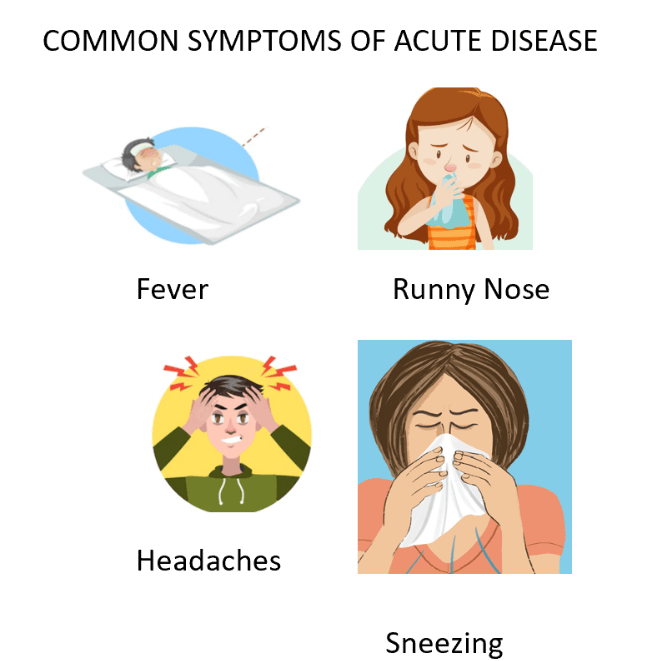
Symptoms:
- Sudden onset of fever, fatigue, or pain.
- Swelling or redness in affected areas.
- Nausea, vomiting, or diarrhea.
- Difficulty breathing in severe cases.
- Symptoms usually resolve within days to weeks with proper treatment.
Chronic Diseases
Chronic diseases are long-lasting health conditions like diabetes, heart disease, and arthritis. They often last for years and require ongoing care. These diseases can affect daily life and need regular treatment and management.
Causes:
- Genetic Factors: Inherited predispositions (e.g., diabetes, asthma).
- Lifestyle Choices: Poor diet, lack of exercise, smoking, or alcohol use (e.g., obesity, hypertension).
- Chronic Infections: Long-term infections like tuberculosis.
- Environmental Exposure: Long-term exposure to pollutants or chemicals.
- Autoimmune Disorders: Immune system attacking the body (e.g., rheumatoid arthritis).
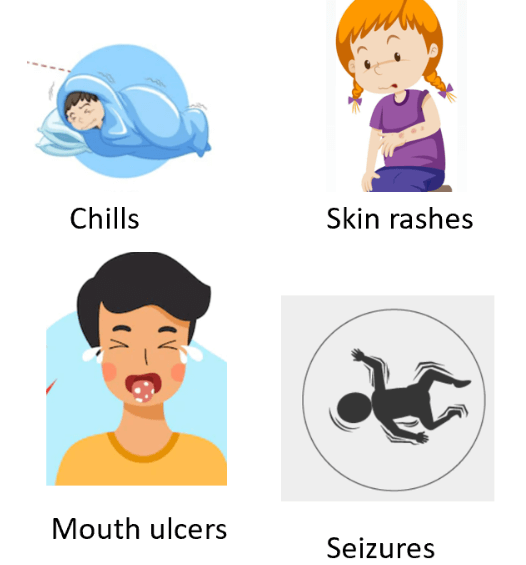
Symptoms:
- Persistent fatigue or pain.
- Shortness of breath or reduced mobility.
- Gradual worsening of organ function (e.g., heart failure, kidney disease).
- Recurring infections or flare-ups.
- Symptoms last months to years, requiring long-term management.

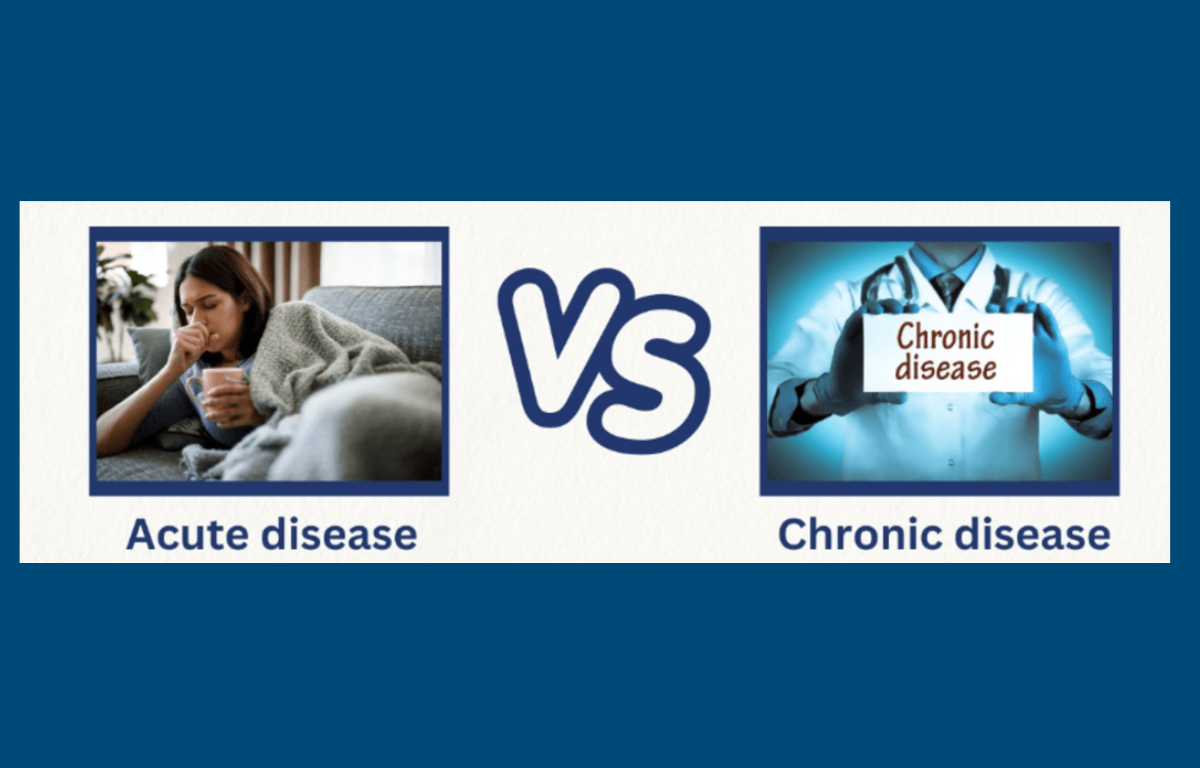

 50 Vegetables Name for Kids in English a...
50 Vegetables Name for Kids in English a...
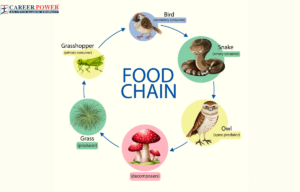 Food Chain: Definition, Types, Examples,...
Food Chain: Definition, Types, Examples,...
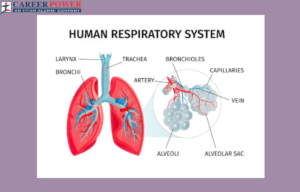 Human Respiratory System: Definition, Di...
Human Respiratory System: Definition, Di...













